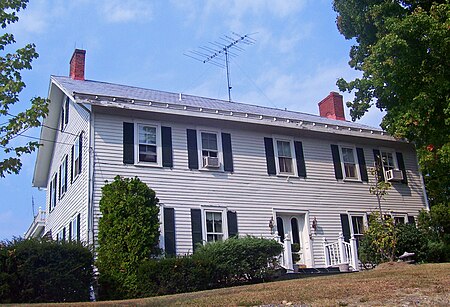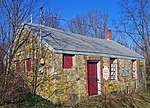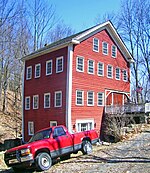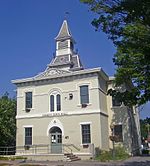Sawyer Farmhouse
Federal architecture in New York (state)Goshen, New YorkHouses completed in 1780Houses in Orange County, New YorkHouses on the National Register of Historic Places in New York (state) ... and 3 more
Hudson Valley, New York Registered Historic Place stubsItalianate architecture in New York (state)National Register of Historic Places in Orange County, New York

The Sawyer Farmhouse is the residence of the family of the same name, on Maple Avenue in the Town of Goshen, New York, United States, at the edge of the Black Dirt Region. It was built about 1780, and is a two-story, five bay, Federal style frame dwelling updated about 1860 in a picturesque Italianate style. An initial addition was built about 1810, and a one-story rear addition was added about 1890.It was added to the National Register of Historic Places in 2005.
Excerpt from the Wikipedia article Sawyer Farmhouse (License: CC BY-SA 3.0, Authors, Images).Sawyer Farmhouse
Maple Avenue,
Geographical coordinates (GPS) Address Nearby Places Show on map
Geographical coordinates (GPS)
| Latitude | Longitude |
|---|---|
| N 41.374722222222 ° | E -74.378888888889 ° |
Address
Maple Avenue 178
10924
New York, United States
Open on Google Maps










